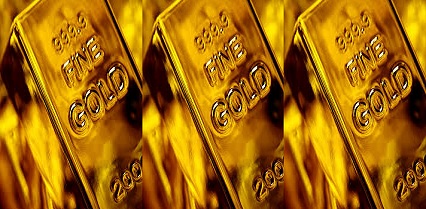World Gold Council’s report reveals research findings on gold rates, factors affecting investors, gold demand and comments on other important findings

Gold Mid-Year Outlook 2022 is WGC’s effort towards improving the understanding of the gold market and underscoring gold’s value to individuals, investors, and the world at large; and backed by the broad knowledge and experience that World Gold Council holds. Collaboration is the cornerstone of their approach.
The report begins with WGC noting that investors face a challenging environment during the second half of 2022, needing to navigate rising interest rates, high inflation and resurfacing geopolitical risks. In the near term, gold will likely remain reactive to real rates, driven by the speed at which global central banks tighten monetary policy in an effort to control inflation. The report defines a point of view “Yet, in our view, rate hikes may create headwinds for gold, but many of these hawkish policy expectations are priced in. Concurrently, continued inflation and geopolitical risks will likely sustain demand for gold as a hedge. Underperformance of stocks and bonds in a potential stagflationary environment may also be positive for gold.”
Major findings of the report include:
Higher rates in 2022 outweighed inflation risks with gold finishing at H1 0.6% higher and closing at US$1,817/oz. 1. The gold price initially rallied as the Ukraine war unfolded and investors sought high-quality, liquid hedges amid increased geopolitical uncertainty. By mid-May, the gold price had stabilized and gold’s price performance was positive across major currencies. Rates and inflation were two of the most important contributors to gold’s performance in 2022. Further, at first glance, gold’s flat y-t-d performance may seem dull, but gold was nonetheless one of the best[1]performing assets during H1. It not only delivered positive returns, but it did so with below-average volatility.
Looking ahead WGC points that investors would be walking a tightrope. “We believe that investors will continue to face significant challenges during the second half of the year. Monetary policy uncertainty will likely ramp up volatility. Most central banks were expected to lift policy rates this year, but many have stepped up their actions in response to persistently high inflation.2 The Fed hiked its funding rate by 1.5% so far this year, the Bank of England has increased its base rate five times since November 2021, to 1.25%, and the Swiss National Bank hiked rates for the first time in 15 years. And although the European Central Bank hasn’t yet raised rates, it has indicated it is prepared to do so. Among developing economies, the Reserve Bank of India is also expected to considerably increase its repo rate by the end of the year.”
Investors are facing difficult choices in terms of asset allocation, the report pronounced. Gold historically performs well in periods of high inflation. “Our analysis shows that while gold has tended to lag during reflationary periods, it has still performed well and it has also significantly outperformed in stagflationary periods.” High-quality government bonds have been a favoured safe-haven asset over the last 20 years because of low inflation and interest rates. Both nominal and real interest rates are at or near historically low levels.
Gold’s behaviour will depend on which factors tip the scale. “We believe that gold will face two key headwinds during the second half of 2022. Firstly higher nominal interest rates and secondly, a potentially stronger dollar; however, the negative effect from these two drivers may be offset by other, more supportive factors, that would include high and persistent inflation with gold playing catch-up to other commodities; market volatility linked to shifts in monetary policy and geopolitics and the need for effective hedges that overcome potentially higher correlations between equities and bonds. In this context, gold’s both strategic and tactical role will likely remain relevant to investors, particularly while uncertainty stays elevated.”
Consumer demand will likely face hurdles. “We expect widespread economic slowdown to put pressure on consumer demand for gold, particularly with many markets seeing notably higher local gold prices. China is especially susceptible to weakness as the government pursues its zero-COVID policy; Indian demand is also facing challenges, although to a lesser degree than those in China. High local inflation, uncertainty about the economic outlook, and the surprise increase of the import duty for gold – aimed in part to mitigate the impacts of rupee weakness – will likely weigh on the recovery of gold consumer demand.”
Gold Mid-Year Outlook 2022 is WGC’s effort towards improving the understanding of the gold market and underscoring gold’s value to individuals, investors, and the world at large; and backed by the broad knowledge and experience that World Gold Council holds. Collaboration is the cornerstone of their approach.
The report begins with WGC noting that investors face a challenging environment during the second half of 2022, needing to navigate rising interest rates, high inflation and resurfacing geopolitical risks. In the near term, gold will likely remain reactive to real rates, driven by the speed at which global central banks tighten monetary policy in an effort to control inflation. The report defines a point of view “Yet, in our view, rate hikes may create headwinds for gold, but many of these hawkish policy expectations are priced in. Concurrently, continued inflation and geopolitical risks will likely sustain demand for gold as a hedge. Underperformance of stocks and bonds in a potential stagflationary environment may also be positive for gold.”
Key highlights include:
For more log on to www.gold.org.
Be the first to comment